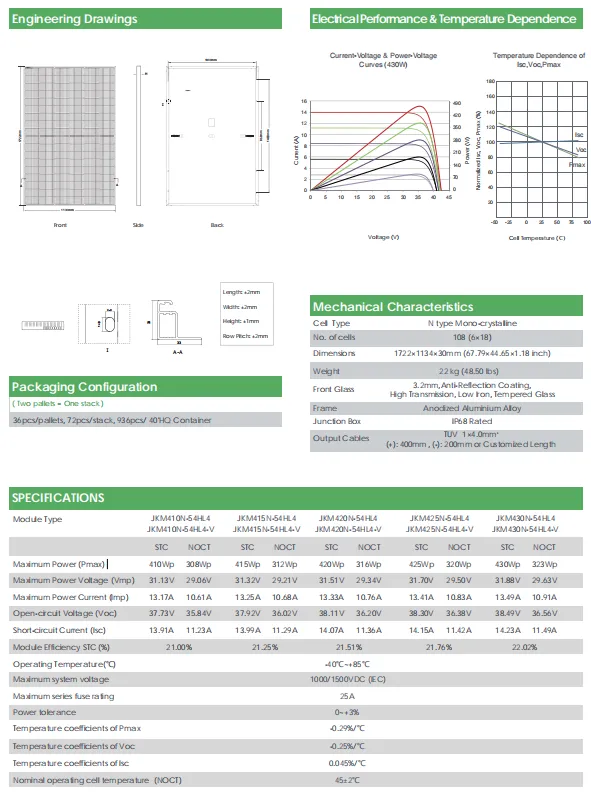solar panel string inverter vs micro inverter
Solar Panel String Inverter vs. Micro Inverter Which is Right for You?
As solar energy continues to gain popularity as a clean and renewable source of power, choosing the right inverter for your solar panel system has become crucial. Among the available options, string inverters and micro inverters are the two primary types. Each has its advantages and drawbacks, which can significantly impact the efficiency, cost, and performance of your solar energy setup. In this article, we will explore these two inverter types to help you make an informed decision.
What are String Inverters?
String inverters are the most commonly used inverter type in solar installations. They work by connecting a series of solar panels – or strings – together, converting the direct current (DC) generated by the panels into alternating current (AC) for use in homes and businesses. Typically housed in a single unit, string inverters are economical and straightforward to install, making them a popular choice for residential solar systems.
Advantages of String Inverters
1. Cost-Efficiency Generally, string inverters are less expensive than micro inverters, both in terms of equipment and installation costs. This makes them an attractive option for those looking to minimize upfront expenses.
2. Simplicity With fewer components involved, string inverters are easier to install and maintain. A single inverter can manage multiple solar panels, simplifying the system architecture.
3. Proven Technology String inverters have been around for decades and have a track record of reliability and efficiency, making them a safe choice for many homeowners.
Disadvantages of String Inverters
1. Performance Issues in Shaded Areas If part of the solar array is shaded or underperforming, it can affect the output of the entire string. This means that the performance of one poorly functioning panel can cause a drop in power production across all connected panels.
What are Micro Inverters?
solar panel string inverter vs micro inverter

Micro inverters, on the other hand, are small devices installed on each individual solar panel. Instead of having one central inverter, each panel operates independently, converting DC to AC at the panel level. This technology allows for better performance optimization and monitoring.
Advantages of Micro Inverters
1. Maximized Energy Harvesting Since each panel operates independently, the overall energy production isn't affected by shading, dirt, or other issues impacting individual panels. This can lead to increased energy output, especially in diverse installation environments.
2. Enhanced Monitoring Capabilities Micro inverters provide real-time data monitoring for each solar panel, making it easier to identify performance issues and maintenance needs.
3. Scalability Micro inverter systems are easily expandable. If you choose to add more panels later, you can do so without overhauling your existing inverter system.
Disadvantages of Micro Inverters
1. Higher Initial Costs Micro inverters usually come with a higher price tag than string inverters, making the initial investment more substantial. Installation costs may also be higher due to the increased number of components and wiring.
2. Complex Installation Installing micro inverters can be more complicated due to the number of devices involved, potentially increasing labor costs and installation time.
Making the Choice
When deciding between string inverters and micro inverters, consider your specific circumstances. If you have a straightforward roof with minimal shading, a string inverter may be the most economical and efficient choice. On the other hand, if your install site has varying shading conditions, different panel orientations, or if you plan to expand your system in the future, micro inverters may provide better long-term benefits.
Ultimately, both types of inverters have their unique strengths and weaknesses. Evaluating your budget, energy needs, and site conditions will help you determine which technology is best suited for your solar energy system. Whether you opt for a string inverter or micro inverters, investing in solar power is a step toward a greener future.
-
String Solar Inverter: The High-Efficiency Solution for Smart Solar EnergyNewsJul.14,2025
-
Revolutionizing Rooftop Energy with the Power of the Micro Solar InverterNewsJul.14,2025
-
Power Independence with Smart Off Grid Solar Inverter SolutionsNewsJul.14,2025
-
On Grid Solar Inverter: Powering the Future with Smart Grid IntegrationNewsJul.14,2025
-
Monocrystalline Solar Panels: High-Efficiency Power for the Future of Clean EnergyNewsJul.14,2025
-
Bifacial Solar Panel: A Smarter Investment for Next-Generation Energy SystemsNewsJul.14,2025







